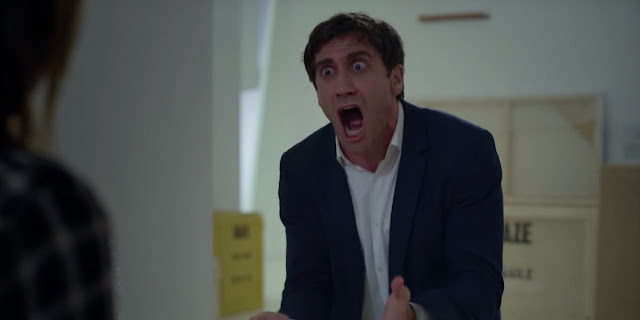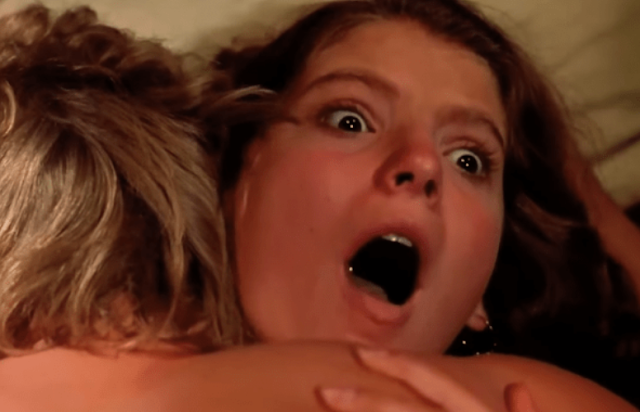Why Velvet Buzzsaw's deaths leave us cold
New Netflix horror Velvet Buzzsaw involves various members of the art world elite meeting grisly ends. Yet why does their baroque suffering leave us cold?
After all, the film boasts a terrific cast – including Jake Gyllenhaal and Hereditary's Toni Collette – and mostly well-drawn characters.
Yet there's something about the macabre yet predictable slaughter that leaves us asking: "So what?"
We're exploring why films with similar plots like Final Destination and Ringu fill the viewer with a sense of dread and leave them invested in the characters' fates, while Velvet Buzzsaw's deaths merely invite weary shrugs.
WARNING: Spoilers ahead
Fatalistic characters
One of the key reasons we don't care about the Velvet Buzzsaw's characters' deaths is that they don't seem to care that much themselves.
Much like how the unfortunate counsellers never seem to put up much of a fight in the Friday the 13th movies, the characters' attitude to their approaching doom seems to be: "Que será, será."
Take gallery owner Jon Dondon's (Tom Sturridge) final moments. He goes to investigate a projector which mysteriously turns on which he's then unable to turn off (horror cliché), before somehow finding himself in a creepy attic (horror cliché), before being strangled by his cravat (a clearly comical way to die). At no point does he put up a fight, and we never expect him to survive.
Even Josephina's (Zawe Ashton) death seems disappointing. Though being massacred by running paint is certainly creative, the scene pulls it punches.
Josephina has a bit of an ineffectual scream, but Jon's reaction to death seems to be: "Oh well."
The movie cuts away before Josephina actually dies, and we next see her sprayed on a wall with grafitti with no real explanation of how she got there. It's as if director Dan Gilroy just hasn't thought her elaborate end through properly.
Compare this with the first death in Final Destination, which has a simpler set-up but is much more effective. Tod ends up slipping in his bathroom and accidentally strangles himself.
It's gruesome, but in a mundane way that's not trying too hard, and is especially wince-inducing because we see it coming a couple of minutes before it happens.
Also, we get the impression that Tod doesn't want to die. Jon and Josephina are perhaps a little weary of life. Josephina has a bit of an ineffectual scream, but Jon's reaction to death seems to be: "Oh well."
Chance of survival: nil
Forty minutes into Velvet Buzzsaw, you realise that all of the principal characters are due to be murdered by a vengeful dead artist.
And that's exactly what happens. There are no surprises. We never expect any of the characters to survive, or particularly want them too.
The only character that does make it through the carnage, frosty gallery owner Rhodora Haze (Rene Russo), is the person most deserving of punishment – having been the driving force in exploiting Ventril Dease's work.
It's not the inevitability that Reiko will die in a week that makes the film compelling, but the very slim chance she has of saving herself and her son that keeps us watching.
Knowing that the characters will die robs the scene of any tension. Compare this with Ringu – a film where the plot revolves around if Reiko and her son will survive a seemingly unstoppable curse.
Unexpectedly, it's not the inevitability that Reiko will die in a week that makes the film compelling, but the very slim chance she has of saving herself and her son that keeps us watching.
Similarly, the characters in Final Destination realise their days are numbered and drive themselves near-insane trying to stay alive.
Then there's that fun final scene where it looks like Alex, Clear and Carter are in the clear – only for them to learn that they'll have to dodge death a second time. The curse won't stop until they're all dead.
Imagine if Final Destination ended with all the characters dying in the order they're supposed to. Or if Ringu ended with Reiko and her son killed by Sadako, rather than Reiko's morally ambiguous decision to pass the curse on to her father in order save her son's neck.
That's kind of how Velvet Buzzsaw ends. There's nothing in the film's plot we don't already know about from watching the trailer.
Then there's that fun final scene where it looks like Alex, Clear and Carter are in the clear – only for them to learn that they'll have to dodge death a second time. The curse won't stop until they're all dead.
Imagine if Final Destination ended with all the characters dying in the order they're supposed to. Or if Ringu ended with Reiko and her son killed by Sadako, rather than Reiko's morally ambiguous decision to pass the curse on to her father in order save her son's neck.
That's kind of how Velvet Buzzsaw ends. There's nothing in the film's plot we don't already know about from watching the trailer.
Velvet Buzzsaw's deaths are boring
OK, Toni Collette getting her arm sawn off by a pretentious artwork is entertaining cinema, but this aside, Velvet Buzzsaw is a failure.
It's predictable. None of the characters demand our sympathy. None of them cling to life hard enough to make us care when they die.
It's much more stylish and has a cooler sense of humour than the camp and very silly Final Destination, yet somehow the latter film bests Velvet Buzzsaw at its own game.
Surely the point of a horror film is to at some point be scared.
Many horror films waste a good portion of their runtime killing off their supporting characters. They're characters the movie doesn't waste much effort developing since they're designed to be expendable, so we as the viewer don't care much either.
Many slashers only get interesting when they come to the showdown between the masked madman and the Final Girl. Velvet Buzzsaw, on the other hand, has no character who demands our sympathy as much as Laurie Strode.
The point of the movie seems to be to portray the fine art elite as cut-throat and self-absorbed. Perhaps we should simply smirk at their symbolically appropriate deaths, but surely the point of a horror film is to at some point be scared.
Looking for Shudder recommendations? Find out why Ruin Me is the best meta horror since The Cabin in the Woods.
Looking for Shudder recommendations? Find out why Ruin Me is the best meta horror since The Cabin in the Woods.
Follow @GoreConnoisseur







Comments
Post a Comment